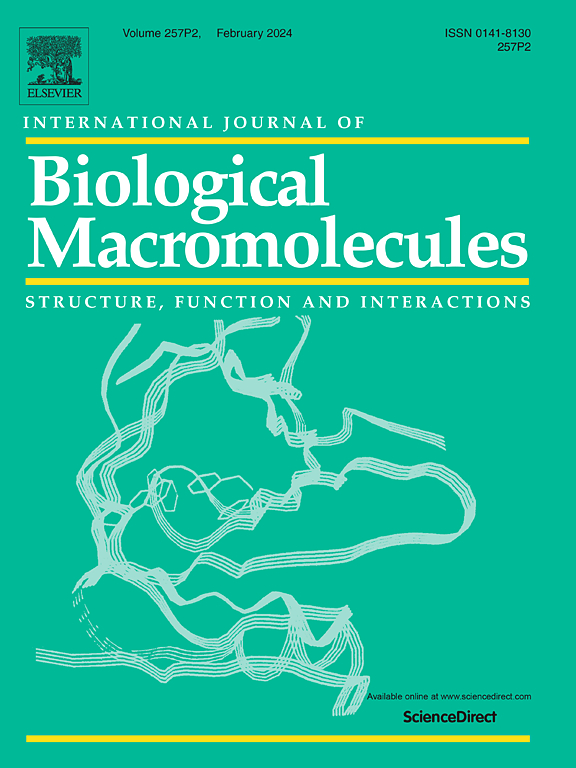Mn2+ 离子结合引起的构象变化激活了变异链球菌中的 SloR 转录因子。
IF 7.7
1区 化学
Q1 BIOCHEMISTRY & MOLECULAR BIOLOGY
International Journal of Biological Macromolecules
Pub Date : 2025-02-01
DOI:10.1016/j.ijbiomac.2024.138828
引用次数: 0
摘要
变异链球菌是一种常见于人类口腔的细菌,被认为是龋齿的主要致病菌。变异链球菌病理生理学中的一个关键角色是 SloR,它是一种 25 kDa 的金属调节蛋白。SloR 在协调必需金属离子(尤其是锰)的吸收和细菌毒力基因的转录方面发挥着至关重要的作用。为了阐明 Mn2+ 离子结合后 SloR 与 DNA 结合亲和力增强的分子机制,研究人员采用了计算(QM 和 MD)和实验(ITC、DSC、CD、EPR)相结合的方法。计算模拟显示,Mn2+的结合会诱导SloR发生构象变化,主要影响其DNA结合结构域的定位,使其处于DNA结合的适当位置。因此,该蛋白质的 DNA 结合亲和力受到了调节。此外,实验结果表明,SloR单体最多可结合三个Mn2+离子,并且在Mn2+复合后,SloR的热力学稳定性增加。所展示的计算结果还表明,Mn2+在主要结合位点的结合足以引发所观察到的SloR构象变化。本文章由计算机程序翻译,如有差异,请以英文原文为准。
Conformational change induced by binding of Mn2+ ions activates SloR transcription factor in Streptococcus mutans
Streptococcus mutans, a bacterium commonly found in the human oral cavity, is considered the primary causative agent of dental caries. A key player in the pathophysiology of S. mutans is SloR, a 25-kDa metalloregulatory protein. SloR plays a crucial role in coordinating the uptake of essential metal ions, particularly manganese, with the transcription of the bacterium's virulence genes. To elucidate the molecular mechanism underlying the enhanced binding affinity of SloR to DNA upon Mn2+ ion binding, a combination of computational (QM and MD) and experimental (ITC, DSC, CD, EPR) methods have been employed. Computational simulations revealed that Mn2+ binding induces a conformational change of SloR, primarily affecting the positioning of its DNA-binding domains, bringing them to an appropriate position for DNA binding. Consequently, the protein's DNA binding affinity is modulated. Additionally, experimental findings indicate that the SloR monomer binds up to three Mn2+ ions and that the thermodynamic stability of SloR increases upon Mn2+ complexation. The presented computational results also suggest that Mn2+ binding at the primary binding sites is sufficient to trigger the observed conformational change in SloR.
求助全文
通过发布文献求助,成功后即可免费获取论文全文。
去求助
来源期刊
CiteScore
13.70
自引率
9.80%
发文量
2728
审稿时长
64 days
期刊介绍:
The International Journal of Biological Macromolecules is a well-established international journal dedicated to research on the chemical and biological aspects of natural macromolecules. Focusing on proteins, macromolecular carbohydrates, glycoproteins, proteoglycans, lignins, biological poly-acids, and nucleic acids, the journal presents the latest findings in molecular structure, properties, biological activities, interactions, modifications, and functional properties. Papers must offer new and novel insights, encompassing related model systems, structural conformational studies, theoretical developments, and analytical techniques. Each paper is required to primarily focus on at least one named biological macromolecule, reflected in the title, abstract, and text.

 求助内容:
求助内容: 应助结果提醒方式:
应助结果提醒方式:


